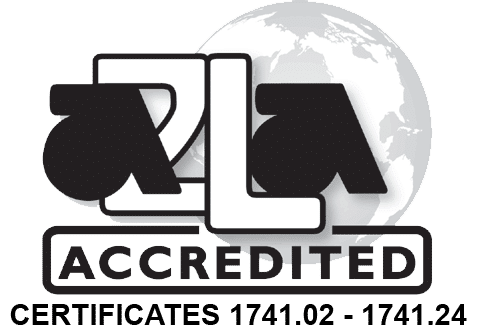How To Avoid Common Thread Gage Mistakes
While thread gages are some of the most commonly used inspection instruments in manufacturing, they can be confusing and intimidating to those who are not familiar with their design. Small mistakes can have large ramifications such as incorrect judgements or frequent need for gage replacements. The following examples are common mistakes that buyers make when ordering thread gages. Along with the issues, we’ve listed some tips on how to avoid making these mistakes and getting the best gage for your needs.
1. Using the wrong (or incomplete) specifications for the thread size.
The method for calling out thread sizes is standardized in publications such as ASME/ANSI B1.2 or B1.16M. These specifications dictate that the class of fit should match the thread call out. For example, if your print states that a male thread of 1 3/16-18 UNEF – 3A you need to use a ring gage with a 3A class of fit. Possibly the most common error we see in gage requests are customers who request the opposite class of fit (in this case, 3B) with the thought that the mating gage will have the opposite class.
Conversely, if your print calls out ¼-20 UNC – 2B, neither a ¼-20 UNC – 3B or ¼-20 UNC – 2A gage can be used. In either case, the pitch diameter of one or both of the gage members will be incorrect. The 3B class has a tighter tolerance and, as such, the pitch diameter is smaller. Using this gage for a 2B toleranced part can lead to bad parts passing inspection.
The next example (1/4-20 UNC 2A) leads to a very important but frequently misunderstood subject; the difference in working and setting gages. An A classification can be used to specify that a plug gage is a setting plug or a ring gage is a working ring. Conversely, the B classification indicates that the plug is a working gage or the ring is a wear check ring. Set plugs and wear check rings cannot, under any circumstance, be used to check products. The reason is that the pitch diameters of these gages are not made to a part specification, but rather to the dimensions of the corresponding working gage that they are used to inspect. The use of a setting or wear check gage can lead to the rejection of good product or acceptance of parts that are out of specification.
In some instances a custom gage is required. An example would be custom threads or an application such as pre-plating. In these cases, a standard gage will not be the correct size. If your print lists specific dimensions different than the standard, it is important to share that information with the gage maker to ensure you receive the correct gage. If you’re replacing an existing gage, keep an eye out for indications of a custom such as the call out “UNS” which states that the gage is unique from the standard. When in doubt, there is no such thing as too much information. The details of the gage should be engraved on the handles or members, which will help identify how the gage needs to be made. Additionally, part prints will also help with making the correct gage for your requirements.
2. Using the wrong type of gage for the application.
Go/No Go thread rings and plugs are some of the quickest and easiest to use instruments in metrology. However, while they are capable of verifying multiple aspects of a thread’s size and form, they do have their limitations. Let’s use the example of checking a thread at a depth. While you can attempt to count turns to get an idea of the depth, this is very subject to operator feel and can also be time consuming. Gages can be made with markings to show if thread depth has been met or other gages such as Kordt’s Cordicheck or Leitech’s COMBI gages are specifically made for these applications. The instruments can be calibrated for depth measurement, are fast and easy to read, and are even available in digital versions.
On the subject of thread depth, it’s important to keep in mind the length of your thread. If your requirement is that the thread be inspected across it’s full length, ensure that the Go member has the appropriate reach. For shorter threads, it’s equally as important to account for the No Go member. The standard dictates that No Go members be able to go 2 ½ to 3 turns. If your thread is only 2 turns deep, this would obviously prevent a standard gage from determining whether a part is acceptable or not.
Certain applications require the measurement of the thread itself (diameters, pitch, angles, etc.). While certain instruments such as bore gages, micrometers, contour systems, and optical comparators are capable of taking these measurements, they do have their limitations. With threads often having tight tolerances, it’s important that all facets of the thread be accounted for in order to get reliable results. Additionally, dimensions such as pitch diameter should be measured specifically and cannot be taken through assumptions. Dedicated instruments such as tri-roll comparators and dedicated bore gages (e.g. Kordt’s Cordatest and Corditest) are accurate and easy to use gages for obtaining these measurements.
3. Using the wrong material or style of gage.
Thread gages, while individually may be inexpensive, can add up quickly. Such being the case, it’s important to consider the material of the product being inspected and the frequency of use for the gage when selecting a style or material of gage. For example, if your product is a harder material, standard tool steel gages will wear quickly. In such instance, a chrome plated gage will last much longer. This reduces the cost of gages over time and the risk of out of tolerance gages leading to corrective actions, product recalls, or scrapping good product.
In cases where high use causes wear on the gage, reversible plugs allow the members to be flipped in their handle, potentially doubling the life of a plug gage member. For ring gages that are used frequently or on larger sizes where more force is likely to be applied, specially designed gages like Glastonbury Southern Gage’s “True Round” are specifically designed with an eccentric insert which maintains its roundness when set to a master plug. The benefit is that the ring can be adjusted more times before out of round condition will render the gage out of tolerance. Alternatively, for thread sizes that are used infrequently, make sure that you are not paying for a gage design that is more than you need. If you’re only going to use the gage one or twice a year and it is not a hardened.
Hopefully, these recommendations help to make sense of some of the options available to you. If you’re still apprehensive, no worries. Cross has a team of experts coupled with a broad range of the industry leading providers of gages. We can help you find the right tool for the job. Contact us today and let us know how we can help.
How Can Cross Help?
In the field of metrology, there are many standards to follow to ensure reliable calibration or inspection. At Cross Precision Measurement, we are an ISO 17025 accredited calibration laboratory that adheres to standards set out by NIST (HB44), the National Conference on Weights and Measures (NCWM), the National Type Evaluation Program (NTEP), A2LA, and other relevant standards. With our experience and expertise, we can ensure you’re getting reliable, repeatable metrology results.
Since 1939, our Precision Measurement group has provided industry-leading technical expertise coupled with world-class customer service to manufacturing and other industrial operations in need of onsite calibration, product inspection, precision measurement equipment, and more. Our precision measurement and inspection teams have the knowledge and resources to help you reduce risk, improve quality, and increase efficiency throughout your entire process. With our extensive network of calibration labs across the Southeast and Midwest, we can ensure you’re getting the metrology services you need. Contact Cross Precision Measurement today





